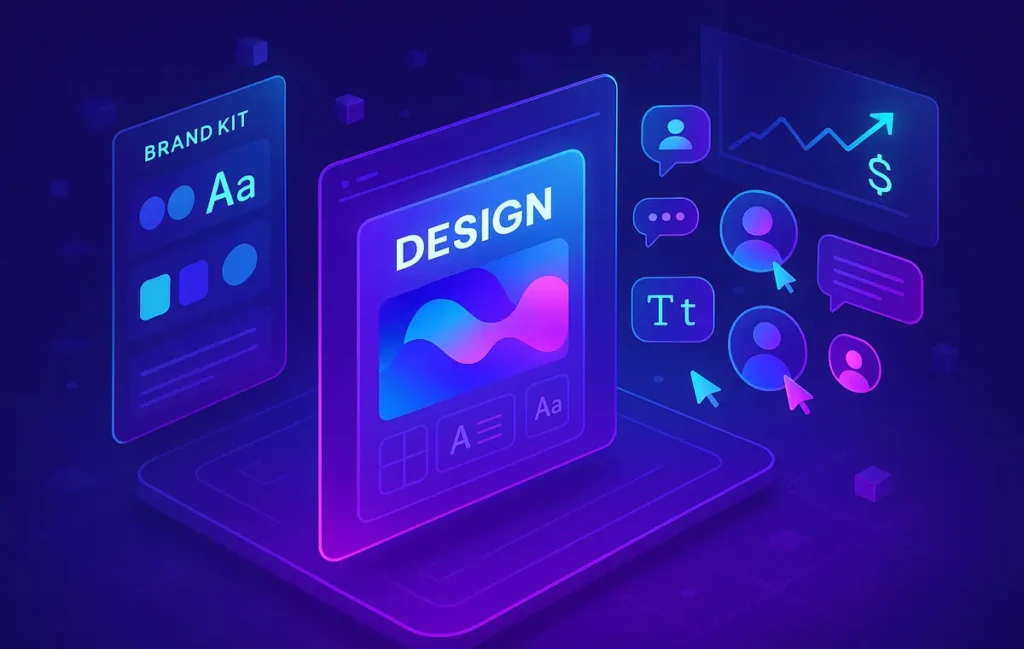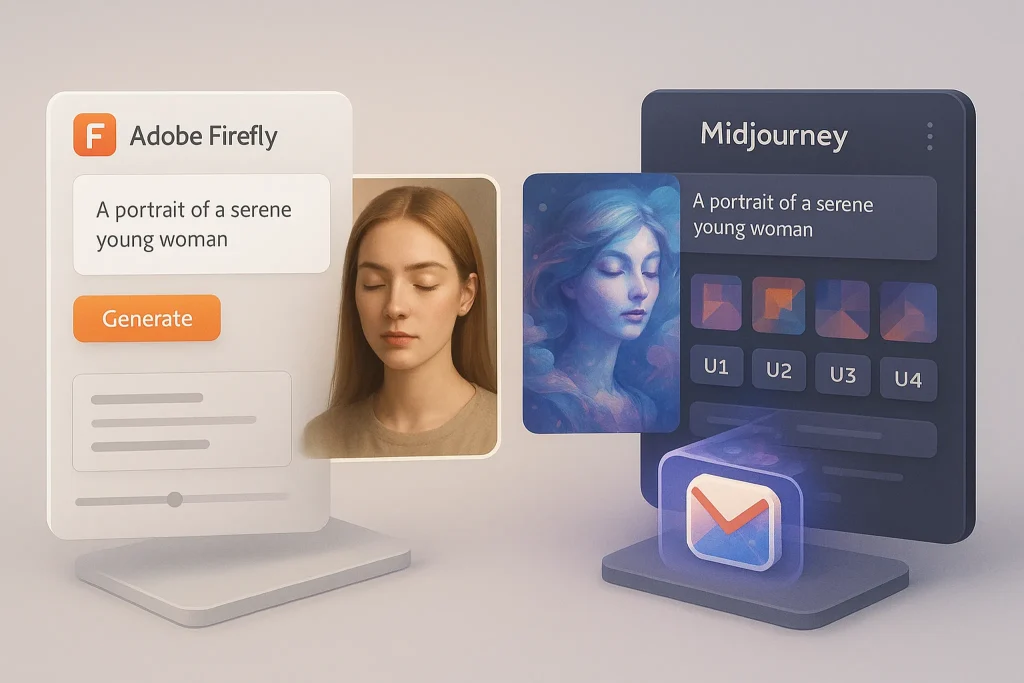🔥 Introduction: Why Canva Pro Still Leads in 2025
Few design tools have become as universally adopted as Canva. What started as a quick, beginner-friendly design platform has transformed into a full creative suite for businesses, teams, and marketers. In 2025, Canva Pro isn’t just a convenience tool—it’s the design backbone of thousands of small businesses, marketing departments, and creator teams.
The reason is simple: Canva Pro balances speed, collaboration, and affordability. While Photoshop or Illustrator remain industry standards, they’re costly and complex. Canva Pro, by contrast, offers accessible design power that teams can scale quickly without training every member in advanced software. But is it still worth paying for Pro in 2025? And how does it hold up against competitors like Adobe Express, Figma, or top free graphic design tools? Let’s dive in.
💡 Nerd Tip: The right design tool isn’t just about features—it’s about whether your whole team can actually use it.
📘 What is Canva Pro? (2025 Update)
Canva Pro is the premium subscription tier of Canva, unlocking advanced features designed for professionals and teams. In 2025, it has evolved well beyond the basics. While the free version is still popular, Pro users now get AI-driven design tools, expanded collaboration features, and exclusive access to premium templates, photos, and brand kits.
The latest updates in 2025 include improved AI-powered text-to-image, video editing with AI subtitles, and Magic Design, which generates entire visual campaigns from a single brief. Canva has also rolled out real-time brand kit syncing, making it easier for distributed teams to stay consistent across campaigns.
💡 Nerd Tip: If you’ve only tried Canva’s free plan, you’re missing the AI layer that’s defining its 2025 offering.
🎨 Core Design Features
One of Canva Pro’s biggest advantages is its templates and asset library. With over 600,000 templates covering everything from Instagram posts to pitch decks, teams no longer start from scratch. Instead, they adapt professional layouts to their brand identity.
The AI-powered design suite is the star in 2025. Magic Resize instantly adapts a design across dozens of formats—from X posts to LinkedIn banners—in seconds. Text-to-image generation allows teams to create unique visuals without hunting for stock photos. This saves time, money, and eliminates the “stock image” feel from campaigns.
Brand Kits and Style Guides are another differentiator. Teams can upload logos, fonts, and color palettes, ensuring every asset matches brand standards automatically. For businesses that rely on consistent visuals across marketing channels, this feature alone can justify the subscription.
💡 Nerd Tip: Use Brand Kits to enforce design discipline. Consistency drives trust, and Canva Pro makes it automatic.
🤝 Collaboration & Team Tools
Design has become a team sport, and Canva Pro’s collaboration tools reflect this reality. Shared workspaces allow teams to organize projects by department, client, or campaign. Real-time editing means multiple people can design simultaneously—similar to Google Docs, but for visuals.
Approval workflows are particularly useful for marketing and content teams. A junior designer can draft a social graphic, a manager can leave comments directly inside the design, and final approval can happen without endless email threads. Integration with tools like Slack and Trello keeps the workflow fluid.
For agencies, Canva Pro allows assigning roles and permissions, ensuring clients can view or comment without accidentally altering brand assets. This has made Canva Pro a quiet favorite among SMB marketing teams who can’t afford complex design management systems.
💡 Nerd Tip: Think of Canva Pro not as a “design app” but as a collaborative design workspace. That mindset shift changes how you use it.
💰 ROI Analysis: Time, Cost & Value
ROI is where Canva Pro shines. Consider the alternatives: Adobe Creative Cloud subscriptions can run $50+ per user per month, with steep learning curves. Canva Pro, at around $12–$15 per user per month, is dramatically cheaper.
For SMBs, the time savings are even more valuable than cost. Instead of waiting days for a designer to create simple assets, marketers or social media managers can generate graphics themselves in minutes. A marketing team that saves even 10 hours per week translates into thousands of dollars in reclaimed productivity annually.
Many businesses also report replacing multiple tools—stock photo libraries, simple video editors, even presentation software—with Canva Pro. That consolidation amplifies ROI.
💡 Nerd Tip: Track design turnaround time before and after adopting Canva Pro. The ROI often shows itself in weeks, not months.
⚖️ Canva Pro vs Free Plan
The free plan of Canva remains a great entry point, but it’s limited. Free users miss out on brand kits, premium templates, advanced exports, and the full AI suite. While individuals can get by with the free plan, any team that produces content regularly will feel the limitations fast.
For example, resizing a campaign graphic for multiple channels is manual in the free version—time-consuming and error-prone. In Canva Pro, Magic Resize does it in one click. Free users also struggle with asset licensing, while Pro unlocks full commercial rights to millions of stock images and videos.
💡 Nerd Tip: If you create more than 10 designs per month, the upgrade pays for itself.
🆚 Competitor Comparison
Canva Pro vs Figma: Figma excels in UI/UX design and product prototyping. Canva Pro, by contrast, is better suited for marketing visuals, social graphics, and content design. Teams often use both: Figma for product, Canva for promotion.
Canva Pro vs Visme: Visme offers strong presentation tools and infographics but lacks Canva’s breadth of templates and AI features. Canva Pro is more versatile for day-to-day marketing needs.
Canva vs Adobe Express: Adobe Express has improved in 2025, offering tighter integration with Photoshop and Illustrator. However, Canva Pro still wins on ease-of-use, template variety, and collaboration. For non-designers, Canva is far more accessible (see Canva vs Adobe Express).
💡 Nerd Tip: Don’t see Canva as a Photoshop competitor—it’s a category of its own. Its strength lies in speed and collaboration, not pixel-perfect editing.
📈 Pros & Cons of Canva Pro
Pros:
-
Huge library of templates and assets
-
AI-driven design automation saves hours
-
Real-time team collaboration
-
Affordable compared to Adobe suite
-
Brand Kits enforce consistency
Cons:
-
Limited advanced editing compared to Photoshop/Illustrator
-
Heavy reliance on templates may create “sameness” if misused
-
Requires internet access for most features
-
Large teams may outgrow Pro and need enterprise-level solutions
💡 Nerd Tip: Canva Pro is perfect for 80% of design tasks. For the other 20%, you may still need specialist tools.
📖 Case Study: Doubling Content Productivity with Canva Pro
A mid-sized SaaS company adopted Canva Pro for its 15-person marketing team in 2024. Before Canva, design bottlenecks meant only two designers handled requests, delaying campaigns by days. After adopting Canva Pro, marketers and copywriters could create on-brand visuals themselves, while designers focused on high-value projects.
Within six months, the team reported a 2x increase in content output across social media, blogs, and presentations. Engagement rose 28% because visuals were timely and consistent. As one marketing manager shared: “Canva Pro gave us speed without sacrificing quality. Our team finally feels agile.”
💡 Nerd Tip: Measure productivity by output, not just hours saved. Canva Pro often doubles creative volume.
⚡ Try Canva Pro for Your Team
Unlock brand kits, AI-powered design tools, and real-time collaboration. Start a free trial of Canva Pro and see if it transforms your workflow.
⚡ Performance & Speed Benchmarks
While Canva started as a lightweight online design tool, by 2025 it has scaled to handle complex workflows and large design files. Performance benchmarks show noticeable improvements compared to earlier years. Large files, such as multi-slide presentations with embedded videos or social media calendars with hundreds of assets, now load and sync much faster.
For teams of 20+ people working simultaneously, real-time editing can occasionally feel heavy, but Canva has invested in server optimization to keep collaboration smooth. On average, designs open 25–30% faster compared to 2023 benchmarks. This matters because design bottlenecks not only frustrate users but also slow down publishing schedules.
💡 Nerd Tip: Regularly clear unused brand assets from your Canva library. This small housekeeping task keeps large team accounts running faster.
🏢 Enterprise & Scalability
Canva is no longer just a tool for individuals or small businesses. In 2025, Canva for Teams and Canva Enterprise have become popular among mid-size companies and even corporate marketing departments.
The Enterprise tier introduces advanced permissions, single sign-on (SSO), and unlimited storage—features crucial for fast-growing startups. More importantly, it includes dedicated support and onboarding, reducing the learning curve for large teams.
This scalability reassures businesses that they won’t need to abandon Canva as they grow. A company might start with five Pro seats and eventually transition into an Enterprise-level account without migrating to another tool.
💡 Nerd Tip: If your startup is growing fast, factor Canva Enterprise into your roadmap early to avoid disruptions later.
🔌 Integration Ecosystem
One of Canva’s underrated strengths is its integrations. In 2025, Canva connects seamlessly with Google Drive, Dropbox, Slack, Trello, and even publishing platforms like WordPress. This reduces friction in moving assets between tools.
For bloggers and marketers, integrations with top 10 content creation tools for bloggers & designers allow workflows like drafting a blog banner in Canva, saving it to Google Drive, and publishing directly to WordPress—all without manual downloads. Slack notifications can alert team members when designs are ready for review, and Trello boards can sync with Canva projects to maintain project visibility.
💡 Nerd Tip: Audit your tool stack. Often, Canva integrations can replace redundant steps in your design workflow.
⚠️ Hidden Limitations & Pain Points
Canva Pro is powerful, but it isn’t perfect. Some designers complain that exported PDFs and large print files don’t always match professional standards required for high-end publishing. While Canva works great for digital-first campaigns, businesses needing advanced print quality may still rely on Adobe tools.
Another pain point is creative sameness. Because so many users rely on templates, inexperienced teams risk producing visuals that feel generic. This isn’t Canva’s fault, but it highlights the need to use Brand Kits and custom elements to avoid blending into the noise.
Finally, heavy reliance on cloud access means Canva is unusable in environments with unreliable internet. Unlike desktop apps, you can’t keep working offline.
💡 Nerd Tip: Use Canva as your speed engine, but keep specialist tools for niche needs like advanced print work or offline projects.
🌐 Community & Marketplace
Canva has fostered a massive creative ecosystem. The Template Marketplace allows designers to sell their templates directly to Canva’s millions of users. This ecosystem mirrors models like how to sell Notion templates, turning Canva from a tool into an income-generating platform for creators.
For teams, this marketplace is also a goldmine. Instead of starting from scratch, marketers can buy specialized templates—like e-commerce product launch kits or AI-powered social post calendars—that accelerate production. Combined with community forums, tutorials, and design courses, Canva has built not just a platform but a learning and earning hub.
💡 Nerd Tip: If your team develops niche templates internally, consider selling them in Canva’s marketplace as an additional revenue stream.
🔮 Future Outlook: AI Roadmap
AI is the future of design, and Canva is moving aggressively in this direction. In 2025, tools like Magic Write (AI copy assistant), Magic Edit, and text-to-image have already reshaped workflows. Canva is positioning itself to become an “AI-first design platform,” where campaigns can be generated from a single text prompt.
Imagine briefing Canva with: “Create a Black Friday campaign with three social posts, one email header, and a presentation slide.” Within minutes, AI-generated drafts are ready, complete with on-brand colors and typography. Early beta features suggest Canva is leaning toward predictive design: recommending formats or assets based on your campaign history.
This shift could reduce design turnaround times even further, but it also raises questions about creativity versus automation. Teams that embrace AI wisely will see productivity soar, while those that over-rely may risk bland, formulaic output.
💡 Nerd Tip: Use Canva’s AI as a creative assistant, not a replacement. The winning formula is human creativity + AI speed.
📬 Want More Smart Design Reviews Like This?
Join our free newsletter and get weekly insights on design tools, content strategies, and AI-powered creativity—straight to your inbox.
🔐 100% privacy. No noise. Just actionable design insights from NerdChips.
🧠 Nerd Verdict
In 2025, Canva Pro continues to deliver the best balance between simplicity, collaboration, and ROI. It’s not meant to replace Photoshop for high-end design work, but for everyday marketing and content creation, it’s unmatched.
At NerdChips, our verdict is clear: if your team values speed, consistency, and cost-efficiency, Canva Pro isn’t just worth it—it’s essential.
❓ Nerds Ask, We Answer
💬 Would You Bite?
If Canva Pro could save your team 10 hours a week, would you pay for the upgrade—or stick with free tools and lose that time?
Crafted by NerdChips for teams and creators who want design speed without sacrificing quality.



